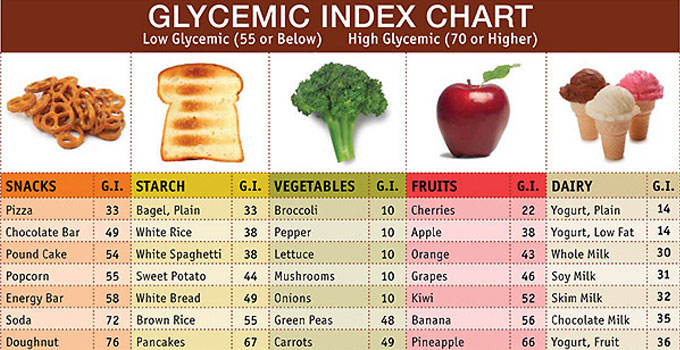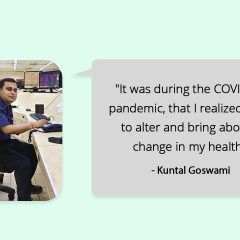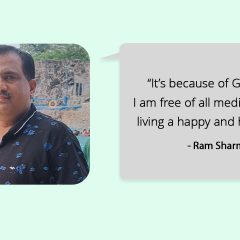
Monsoons are the time when we see rainbows in the sky. Just like the rainbow in the sky did you know that you can have a rainbow in your plate daily? Rainbow in your plate refers to eating colourful fruits and veggies daily. Wondering what do I mean by this? Have you ever heard of a rainbow diet? It’s not an actual diet – it refers to choosing fruits and vegetables of every colour that is there in the rainbow.
We have always been told to ‘eat our greens’, but now health experts say it’s just as important to eat our reds, oranges, yellows, blues and purples, too…Fruits and vegetables fall in five different colour categories- Red, Purple/Blue, Orange, Green and White/Brown. Each colour carries its own set of unique disease fighting chemicals called Phytochemicals.
The phytochemicals are responsible to give the fruits and vegetables their vibrant colour and of course some of their healthy properties. Fruits and vegetables contain hundreds of colourful phytochemicals that act as antioxidants, which help to ‘mop up’ potentially harmful molecules called free radicals before they get a chance to damage cells.
Eating the full rainbow of foods regularly helps to give your body the nutrients it needs. All those different colours will add plenty of flavours and textures to your dishes, making meals not just more healthy, but more enjoyable and satisfying.
Research has shown that eating a variety of these nutrients can work together to:
- Strengthen your immune system
- Lower your risk for certain cancers
- Help ward off type 2 diabetes
- Reduce high blood pressure
- Prevent some eye diseases
- Maintain urinary tract health
- Maintain heart health
- Improve memory
- Help build strong bones and teeth
So what’s in these Colours?
Choose from: Raspberries, Cranberries, Strawberries, Cherries, Pomegranates, Red Apples, Grapes, Watermelon, Guava, Red Capsicum, Tomatoes, Peppers, Radishes, Red peppers, Red Onions and Potatoes.
RED- Red fruits and vegetables are coloured by a natural plant pigment called lycopene. Lycopene is a powerful antioxidant that can help reduce the risk of cancer, especially prostate cancer, keep our heart healthy, improve vision and avoid urinary tract infections. We absorb lycopene more easily when foods have been heated, so processed tomatoes are better than Raw. Fat, such as olive oil or cheese, also helps enhance absorption.
ORANGE/YELLOW– Choose from: Apricots, Cantaloupe, Mangoes, Peaches, Papaya, Oranges, Lemon, Grapefruit, Pineapple, Carrots, Sweet Potatoes, Yellow and Orange Peppers,Pumpkin and Sweet Corn.
Carotenoids are the ones who are responsible to give this group their vibrant colour. A well-known Carotenoid called Betacarotene is found in Sweet Potatoes, Pumpkins and Carrots. It is converted to vitamin A, which helps maintain healthy mucous membranes, healthy eyes and helps maintaining the skin and cells that line the airways and the digestive and urinary tracts. Another Carotenoid called Lutein is stored in the eye and has been found to prevent cataracts and age-related macular degeneration, which can lead to blindness. Beta-cryptoxanthin – in Mangoes,Nectarines, Peaches, Peppers and Citrus fruit – may maintain the respiratory tract, reduce the risk of lung cancer and ease inflammation associated with arthritis.
GREEN-Choose from: Asparagus, Avocado, Spinach, Lettuce, Lime, Cucumber, Broccoli, Leafy Cabbage, Green Beans, Peas, Sugar Snap Peas, Mangetout, Cress, Peppers, Spring Onions, Leeks, Green Apples, Green Grapes and Kiwi Fruit.
Green vegetables contain a range of phytochemicals including carotenoids, indoles and saponins, all of which have anti-cancer properties. Research shows that lutein and zeaxanthin act as ‘natural’ sunglasses and filter out harmful light that can damage the eyes. A good intake of these antioxidants may help prevent age-related macular degeneration, a leading cause of blindness, and may help protect against cataracts. Leafy veggies such as Spinach and Broccoli are also excellent sources of Folate.
PURPLE /BLUE-Choose from: Blackberries, Blueberries, Grapes, Black currants, Plums, Prunes, Raisins, Purple Cabbage, Red onions, Brinjal and Beetroot.
The plant pigment anthocyanin is what gives blue/purple fruits and vegetables their distinctive colour. Anthocyanin also has antioxidant properties that protect cells from damage and can help reduce the risk of cancer, stroke and heart disease. Good intakes of anthocyanins have also been linked to improving balance, co-ordination and short-term memory in old age, as well as better vision, although more research needs to be carried out to confirm these findings. Research shows that proanthocyanidins may help to protect against urinary tract infections.
BROWN/WHITE-Choose from: Cauliflower, Mushroom, Garlic, Banana, Potatoes, Dates, Onions, Ginger, Turnip.
White fruits and vegetables contain a range of health-promoting phytochemicals such as allicin (found in garlic) which is known for its antiviral and antibacterial properties. Some members of the white group, such as bananas and potatoes, are also a good source of potassium.
Your Daily Quota
- Children 2 to 6 years oldshould get three servings of vegetables and two servings of fruit, that’s a total of five.
- Children older than 6, teenage girls, active women and most men should get at least four servings of vegetables and three servings of fruit, a total of seven.
- Teenage boys and active menshould get five servings of vegetables and four servings of fruits, a total of nine.
Create a Rainbow in Your Plate
Make a tropical rainbow fruit salad with fruits of each colour: Oranges, Strawberries, Mango, Watermelon, Kiwifruit, Bananas, and Blueberries. Stir fry your own mix of vegetables using each colour: Onions, Carrots, Baby Corn, Broccoli and Mushrooms.
Fruits and vegetables tend to be filling and low in calories, they can also be a good way to help you reduce or manage your weight. So eat a Rainbow even when it is not raining.

 We all know what’s an apple and what is vinegar! But, have you given a thought to what if both apple and vinegr are blended, how would it taste?
We all know what’s an apple and what is vinegar! But, have you given a thought to what if both apple and vinegr are blended, how would it taste?



